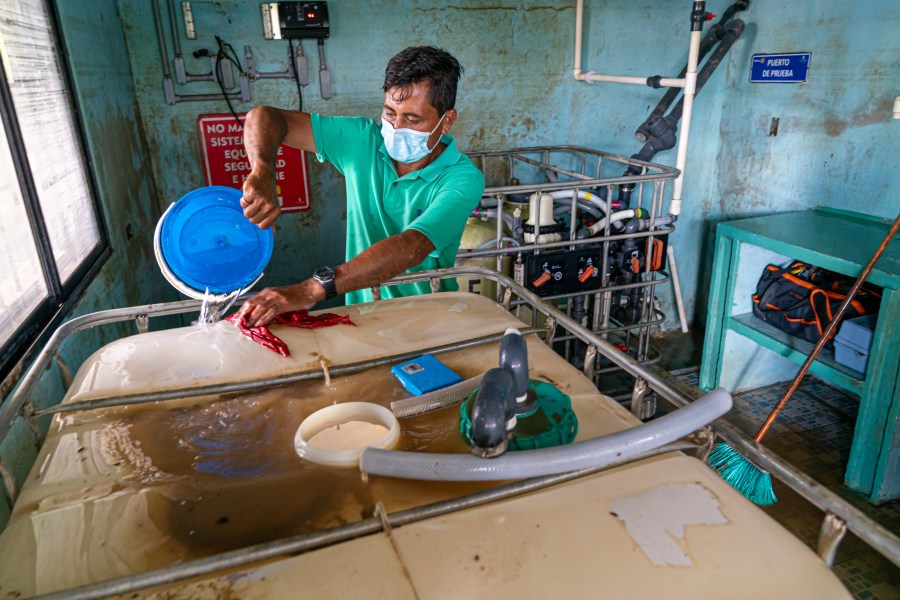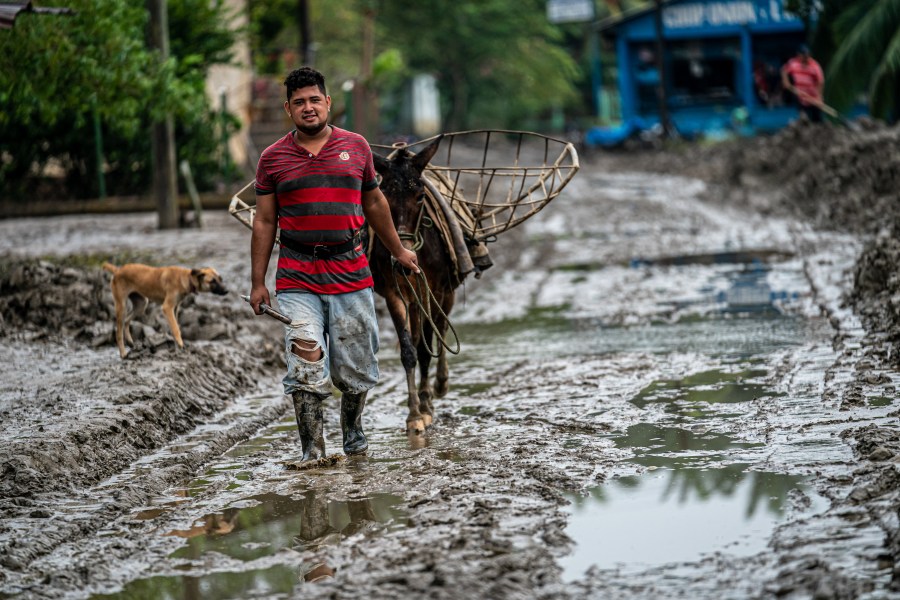In early November, Hurricane Eta left a path of devastation throughout Honduras, causing extensive flooding and damage and forcing entire communities to evacuate to emergency shelters. Two weeks later, Hurricane Iota took a similar path through Central America, impacting many of the same communities that experienced significant damage. In Honduras alone, these back-to-back storms affected more than 3 million people, displacing nearly 180,000 from their homes.
After any natural disaster, safe water is the number one need. Water Mission’s Honduras team immediately began trucking in water from the country office in Tocoa, to emergency shelters and impacted communities. It has now been weeks since the storms hit the country, but Water Mission continues to respond to emergent and long-term needs in devastated communities.
Through the generosity of Water Mission partners and supporters like you, much-needed supplies have been donated, hundreds of hygiene kits have been distributed, and damaged safe water systems have been restored. Work is underway to install between 20 and 25 new safe water solutions, with 13 new installations currently completed as of mid-December. Each safe water system is being “built back better” offering enhanced protection from future storms and flooding.
Recently, humanitarian photographer Gary Chapman and his wife, Vivian, a writer and storyteller, accompanied the Water Mission Honduras team as they serve communities impacted by the storms. Gary and Vivian share some powerful stories and images that convey the devastation people are enduring. Below, they share about the life-saving water that is being made available through the generosity of Water Mission partners and supporters and the long road to recovery that is just beginning for the people of Honduras.

Water Mission Interview with Gary and Vivian Chapman:
Water Mission: What was your initial impression of the areas impacted by Hurricanes Eta and Iota?
The Chapmans: The hardest-hit areas we saw were mostly agricultural communities located near rivers that swelled, overflowed, and swept through villages and fields in devastating 10-foot currents. These areas are where most of the farmers work and live. This population is the most vulnerable because their houses were destroyed or damaged, and their crops ruined.
Even though it had been a month since the first storm hit, there were places where the water had yet to recede, keeping homes submerged and making some roads impassable. Where the water had receded, the ground was so saturated that it was challenging and sometimes impossible for trucks to get through.
These conditions make it really challenging to reach those communities that need safe water. Yet, Water Mission is delivering emergency equipment to shelters and making repairs in places where existing safe water projects have been damaged.

Water Mission: Were the areas hit all in close proximity or were the communities spread out?
The Chapmans: Communities we visited were spread out. For example, it took an hour by boat to get to Palo Blanco because the road there was still under water. Palo Blanco is a community along the Ulua River where Water Mission was in the process of implementing a safe water project prior to the hurricanes.

This community is eagerly awaiting a permanent safe water system and would already have solar panels installed at the site had it not been for the storms. To provide safe water in the interim, water purification packets, donated by P&G, were distributed by Water Mission staff members, who also demonstrated how to use the packets to turn dirty water into clean, drinkable water.

One woman said she was so happy to get a purification packet because, without a safe water solution in place, water that was safe to drink was costing her so much. She not only had to pay high prices for the commercial bottles of water, but she had to pay for their delivery by boat as well. “Those packets are really going to help us,” she said of the P&G product.
Water Mission staff also distributed hygiene packets at two emergency shelters in the area, thanks to the support of Water Mission partner Heart to Heart. The hygiene packets contain essential items such as face masks, sanitizer, toilet paper, and toothpaste.

Water Mission: Did other communities you visited have safe water before the storms hit?
The Chapmans: We visited La Danta, a rural agricultural community hit hard by the double slap of both Eta and Iota. On the day we were there, the floodwaters were just receding, and the families we talked to were in the midst of cleanup, pulling out everything from their homes that they could salvage. This community was home to a permanent solar-powered safe water system with multiple access points located throughout the community.
One resident, who was cleaning up her house with her children talked to us about how much she missed affordable, safe water within walking distance. It had been a month since Eta hit, and they had fled to a relative’s home in another community. The cost of safe water jugs was ten times the price she was used to paying at La Danta. She told us that she wanted to return home as soon as possible, even if there was no electric power. “I want water more than electricity. Once we clean up here, we can return and make do with whatever we have, but I want safe water for my family.”
The safe water system in La Danta had been submerged under 10 feet of water during the flooding. Fortunately, that same day, Water Mission staff was able to restore the system to working condition.

Water Mission: What was it like working alongside Water Mission staff?
The Chapmans: Working alongside Water Mission was amazing! We can’t say enough about the dedication and hard work of the Water Mission Honduras staff. We documented their installation and rehabilitation of existing safe water systems, their distribution of hygiene kits, and demonstrations of P&G purification packets in communities and emergency shelters.
We stayed places until tasks were completed and their work never finished before sunset.

Water Mission: Did you get the sense that there is still a great need for safe water?
The Chapmans: The job of bringing safe water solutions to these hard-hit communities in Honduras is really just beginning. We asked older people who had experienced hurricane Mitch in 1998 what the difference was between what they experienced then and now. Several pointed out that the double whammy of Eta and Iota hit rural areas more than urban centers.
These agricultural communities depend on good crops. For farmers and day laborers, finding work will be challenging. Many hard-working Hondurans we talked to will have to “start from zero,” as they said, figuring out where to shelter, feed their families, and access safe water. These storms have hit the most vulnerable populations.
“How are we going to pay for safe water now if we don’t have jobs?” was a question we heard more than once.

We have hope that documenting Water Mission’s work in Honduras will inspire people to pray for restoration, and if led, to give generously as these communities rebuild. Perhaps Pastor Jorge in Chamelecón said it best, “Jesus says He is Living Water. We need to express that message literally. The church needs to be God’s arms and hands to the community.”
Watch the video below for updates on the latest progress made in our Honduras disaster response.

